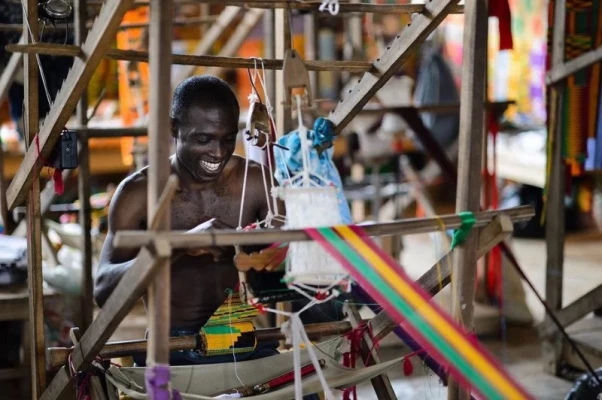The Controversial Emergency...
November 6, 2025

Kente, a Ghanaian textile crafted from hand-woven silk and cotton strips, carries a rich cultural significance deeply rooted in Ghana's history. Traditionally adorned by royalty among the Ewe and Akan people, kente is renowned for its vibrant colors and intricate patterns. According to Ashanti oral tradition, its origins trace back to Bonwire in the Ashanti region, where master weavers first breathed life into this celebrated fabric.
In contemporary Ghana, the wearing of kente cloth has transcended its royal origins to become a symbol of national pride and a hallmark of special occasions. Master weavers lead kente brands that cater to a burgeoning demand for this iconic textile. Beyond Ghana's borders, kente finds its place among the Ewe and Akan communities in parts of Togo and Ivory Coast.
The popularity of kente patterns has spurred the production of mass-printed fabrics bearing its designs across West Africa and beyond, making it a ubiquitous symbol of African identity. Its distinctive motifs are also incorporated into the design of academic stoles for graduation ceremonies worldwide.
The term "kente" derives from the Asante dialect of the Akan language, where "kenten" translates to "basket," alluding to the fabric's basket-like patterns. Within the Akan ethnic group, kente is also referred to as "nwentoma," meaning "woven cloth." Ashanti folklore weaves a tale of weavers inspired by the intricate web designs of Anansi the spider, attributing the invention of kente to their creative pursuit.
Weaving textiles has been a cornerstone of West African cultures for millennia, with archaeological findings dating back to ancient handloom weaving practices in Southern Ghana. Asante oral tradition credits the introduction of the loom to Bonwire during the 17th century, marking the genesis of kente production. Under the patronage of Asantehene Opoku Ware I in the 18th century, kente weaving flourished, laying the foundation for its evolution into a symbol of cultural heritage.
Authentic kente cloth, produced by skilled traditional weavers in towns such as Bonwire and Sakora Wonoo, commands reverence for its craftsmanship and heritage. Weaving on wooden looms, artisans merge dyed fabric threads to create intricate patterns, often apprenticing under master weavers before crafting their designs. Gender norms influence production, with weaving traditionally considered a male practice.
Kente patterns boast a kaleidoscope of designs, each carrying its name or message imbued by the weaver. From abstract motifs to symbolic representations of proverbs and historical events, every kente cloth tells a story of cultural identity and artistic expression. Adorned with vibrant colors and intricate patterns, kente symbolizes the intrinsic value placed on tradition and heritage within Ghanaian society.
As a timeless emblem of Ghana's rich cultural tapestry, kente continues to weave its way into the fabric of national identity, celebrating the heritage and craftsmanship of generations past while inspiring a legacy for generations to come.
November 6, 2025
November 5, 2025
November 4, 2025
October 31, 2025
October 30, 2025
October 30, 2025
October 30, 2025
September 25, 2025
September 12, 2025
September 11, 2025